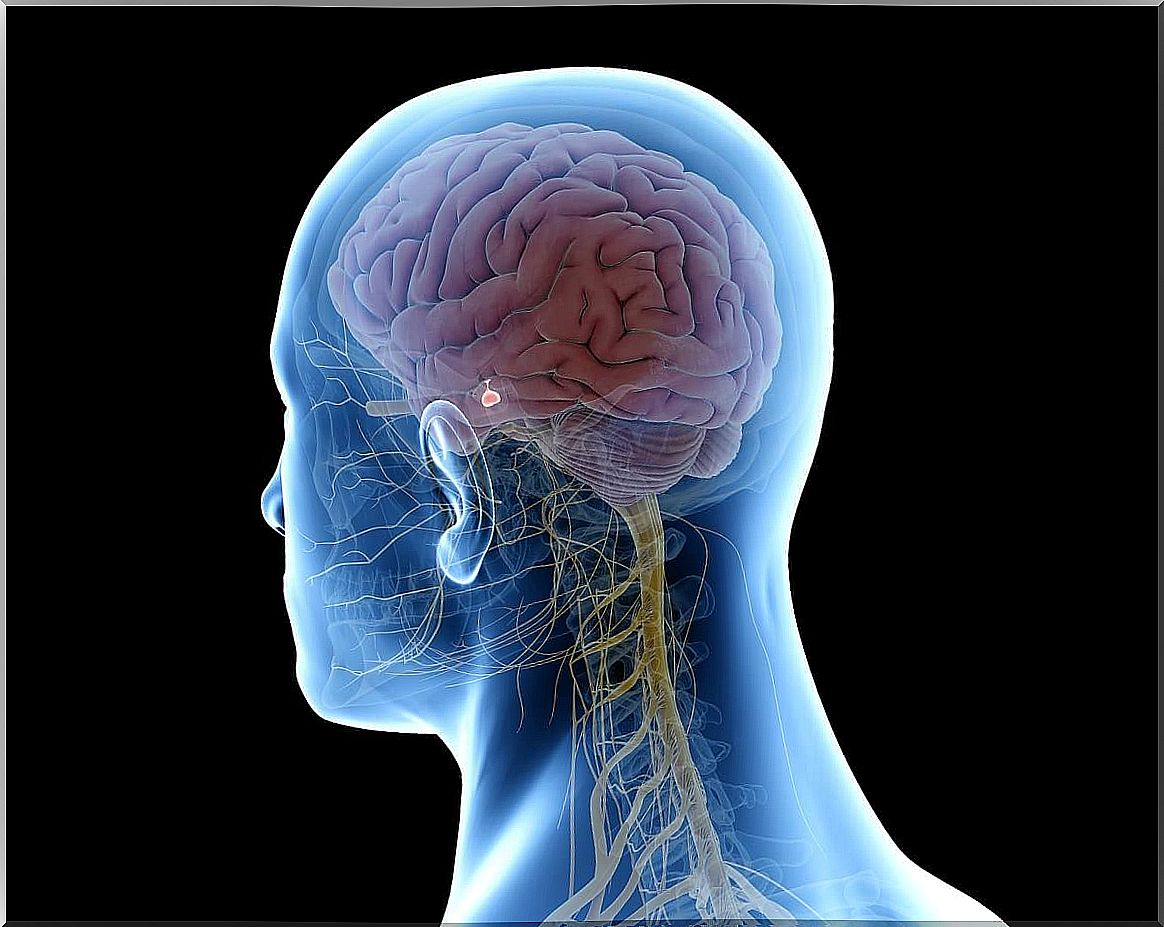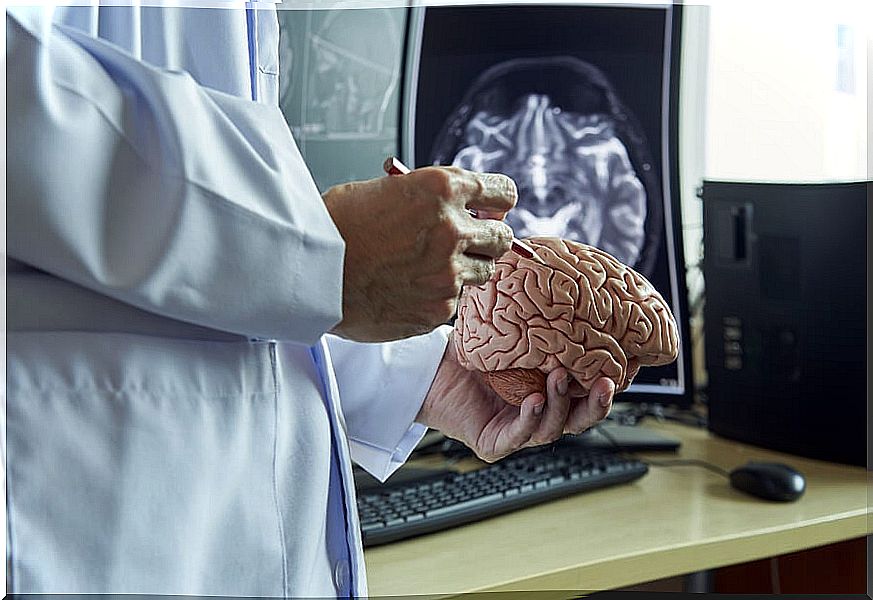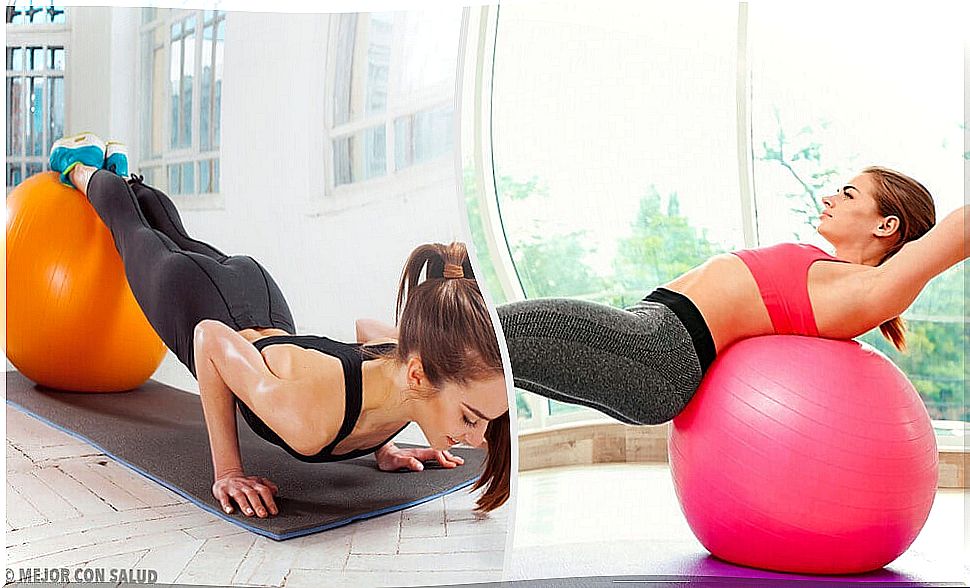Proprioception: What Is It And Why Is It Important?
Proprioception is one of those abilities that many people do not notice in their own body, until when it is altered or lost. Find out all about it.

Proprioception is the brain’s ability to detect the position of each part of the body and movement. It allows a person to move freely, without having to think about how they are going to take the next step or how they should move an arm, for example.
Thanks to proprioception, it is also possible to carry out the appropriate movements to avoid a fall or avoid a dangerous object. It is also known as “kinesthesia” and there are some conditions, conditions and diseases that can affect it.
Proprioception depends on the proprioceptive system. This receives the signals about the precise location of the muscles and joints. In this way, it identifies the exact position of the body at all times and decides if it is necessary to carry out any movement and how to do it.
Components of the proprioceptive system

Proprioception is related and intervenes in aspects such as the regulation of balance , the coordination of movements and the brain’s alert system. The components of the proprioceptive system are as follows:
- Proprioceptive receptors. They include the muscle spindle, the Golgi tendon apparatus, skin receptors, and joint kinesthetic receptors. These are located in the bones, muscles, joints, ligaments, and tendons. Its function is to capture the stimuli.
- Afferent nerves. They are responsible for transmitting to the brain the information collected by the proprioceptive receptors.
- Central Nervous System (CNS). All the information is processed in the brain and from there the corresponding orders are sent to the joints or muscles to carry out a certain action such as walking, stopping, jumping, etc.
What can alter proprioception?
Proprioception can be altered by several factors. One of the most common is the intake of alcohol. This is why a drunken person has difficulty balancing on one foot or touching the tip of his nose.
Injuries, conditions, and disorders that affect the muscles, nerves, or the brain can also cause abnormalities in the proprioceptive system. Likewise, the aging process can also affect this ability.
Among the injuries that can cause these anomalies, are the following:
- Brain injuries.
- Herniated disc.
- Joint injuries, such as a sprained ankle.
- Joint replacement surgeries.
On the other hand, some of the diseases that are associated with problems in the proprioceptive system are the following:
- Arthritis.
- Multiple sclerosis (MS).
- Race.
- Autism Spectrum Disorder (ASD).
- Diabetes.
- Peripheral neuropathy.
- Parkinson’s disease.
- Huntington’s disease.
- ALS (Amyotrophic Lateral Sclerosis) or Lou Gehrig’s disease
Symptoms of an alteration in proprioception
If the proprioceptive system works normally, the movements are performed fluidly without the need to think about them. When there is an abnormality, there is not that fluidity and this can hinder many of the daily activities.
Signs and symptoms of proprioception problems may include the following:
- Balance problems. Frequent falls or difficulty standing on one foot are examples.
- Incoordination in movement. An example is difficulty walking in a straight line, colliding with objects, etc.
- Poor postural control. Slouching or difficulty maintaining posture while sitting are examples of this.
- Difficulty recognizing your own strength. Use too much or little force for an action such as lifting an object or pressing a keyboard, for example.
- Fear of falling into certain activities. Climbing stairs or walking over uneven surfaces creates insecurity for people with proprioception problems.
Importance and exercises to work on proprioception

Proprioceptive ability can be trained or improved by performing a few simple exercises. These help increase strength, stability, coordination, balance, and reaction time.
To work on proprioception , balance, coordination and surface change exercises must be performed. There are a series of implements and materials that facilitate and make this type of exercise very effective. We will talk about them and some exercises that should be done right away.
Advisable materials
There is a wide variety of materials used for proprioception exercises. Some of the most used are the following:
- Bosu. It is a firm support that in its upper part has a half inflated sphere. On this, various exercises are done to train the proprioception of the ankle, knee and hip in particular.
- Swedish ball or fitball. It is an inflatable ball of different sizes. It is used in particular to improve proprioception of the trunk.
- Balance board. It is also called a balance board or unstable platform. It is the opposite of bosu: a firm surface with an unstable base, usually a half sphere.
- Unstable disk. Also known as a wobble cushion . It is a kind of inflatable cushion that has different degrees of instability depending on the amount of air it contains.
- Foam or balance pad. It is similar to a mat with an unstable surface.
Proprioception exercises: the split
It starts in an upright position, with the legs half open. The trunk is bent over one of the legs and, then, this one is advanced as far as possible. The supporting foot should be kept still and steady. The head should be facing forward and the arms should be extended forward.
Leg swing
Start in an upright position. One leg stands firm and the other stands up. With the leg that is in the air, a pendulum movement is made, first forwards and then backwards. The limb must be fully stretched. The arms should be extended to the sides.
Jumping and braking
With the trunk extended forward, three vertical jumps are carried out with both feet. Braking is done on the third jump and you must land on one foot. Such braking is done with the leg bent, to prevent possible injuries.
Sideshift and braking
Two to three steps are taken laterally. In the last step he brakes, leaving only one supporting foot. The trunk should be straight and not flex. It is advisable to close your eyes when taking the final step and be left with only one support.
Squat
For this exercise proprioception used the fitball . This should be supported against a wall and then lean back against it. In this position, do a half-bend with one leg and then extend it, while the supporting foot remains still. Arms should be parallel to the floor.
Training proprioception minimizes injuries
There are a wide variety of proprioception exercises that can be done regularly without problem. Ideally, you should consult a physical therapist or certified trainer for an appropriate routine for each particular case.
If the proprioceptive system is working properly, injuries are less frequent. Also, when training proprioception, greater control over movement, more strength and more agility are achieved.









